Queer Brides Are Shopping Everywhere *But* Bridal Stores
Newlywed Lauren Chan talked to three fashionable peers about how they found the wedding looks of their lesbian dreams.
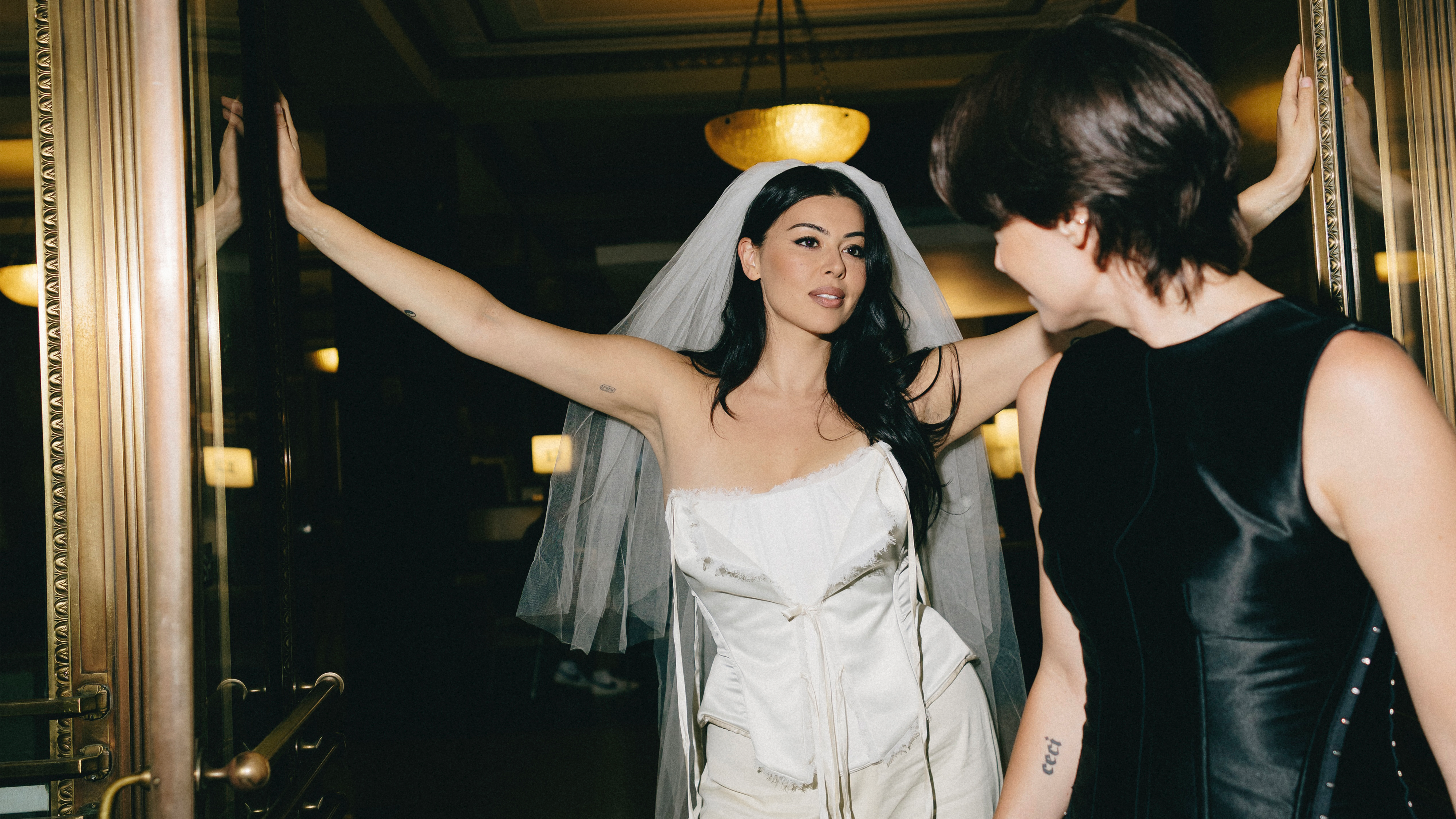

Lauren Chan is aBest Knockoff Luxury Clothing editor in residence, model, former award-winning fashion editor, and founder of Henning, a luxury plus-size clothing label.
While planning my nuptials, one of the first things I did was open Instagram and type “lesbian wedding” into the search bar. Where I expected to see an endless scroll of reels, there was a blank page with the message: “No results found for ‘lesbian wedding.’” I figured the app was having an innocuous glitch; to troubleshoot, I searched “wedding” and—ta-da!—a plethora of content appeared. This, as it turns out, was an explicit metaphor for how I’d experience the wedding industry as a queer bride.
As my planning continued, I was incessantly reminded that the wedding industry isn’t built for LGBTQ+ folks. In a word, I felt excluded—whether by the thin, white, male-gaze beauty standard apparent in magazines and ads or the lack of cards or cakes that read “Mrs. Mrs.” Getting dressed for the big day was no different: Bridal fashion brands do not speak to the queer eye.
Though it may seem trivial, it’s important to call out this inequity in the culture wherein the Supreme Court is considering repealing marriage equality by overturning Obergefell v. Hodges (the landmark 2015 case that enshrined same-sex marriage into the Constitution) and, perhaps more importantly, to celebrate the ways in which queer people forge ahead, find joy, and offer representation to our own community.
That’s why I decided to talk to other brides who, despite feeling unable to find their wedded garments at bridal shops, found other avenues to get dressed: author Tembe Denton-Hurst, model Kelly Hess (Mittendorf), and creator Becca Calegari. So where did they shop? And what did they learn? Find out here.
Tembe Denton-Hurst Followed Ellie Misner on Instagram
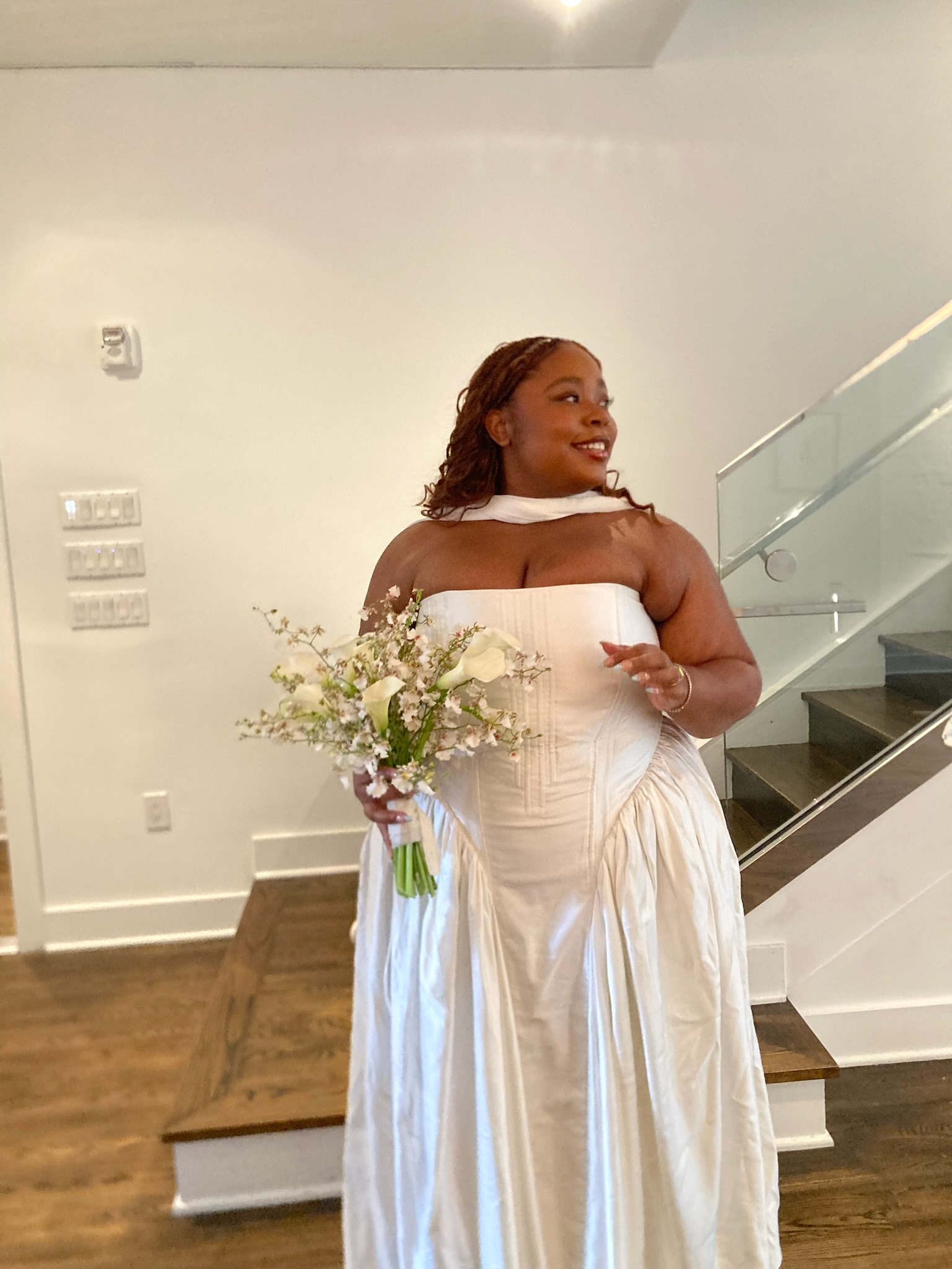
"It just looked ugly," said Denton-Hurst of the market while she was dress shopping for her wedding. You know what she means: "Bridal was… princess." When I asked where she started her shopping quest, she quickly answered with, "I didn’t shop." Denton-Hurst said she knew there was no world in which she would be able to buy something off the rack that she liked and came in a size 18. (A bridal size-exclusivity crash-out warrants its own article.)
She noticed her peers starting to trend toward the Vivienne Westwood and Danielle Frankel vibe, but neither of those felt decidedly Tembe. "We have our own aesthetic codes," she said. "I had a very Black wedding and very lesbian wedding. Making that visual was important."
As a first swing, Denton-Hurst was in conversation with Wiederhoeft to align on a vision for a custom gown. When that didn’t move forward, she was a bit stumped. "Then I was on Paloma Elsesser’s Instagram and saw that she had worn a corset by Ellie Misner, who was designing what she calls 'couture for all bodies,'" she shared. One DM later and the rest is lesbian wedding history.
The final looks by Misner were both ivory, one was a two-piece minidress and corset with an off-the-shoulder underpinning; the other was a classic basque-waist gown with hip pads. The padding (my favorite part!) was influenced by the female gaze and Denton-Hurst’s now-wife Connay Bratton. “I’m not afraid of mass,” she said. "I think there’s a tendency for people to be as vanishingly small as possible on their wedding days. But [Connay] has made me feel even more comfortable in my body; I never felt like I had to hide any parts of myself."
Becca Calegari Found James Ford Through Community

"I like an androgynous aesthetic," said Calegari. "It’s obviously hard for masculine-leaning women to find that in a textbook [bridal] store. But just because you don’t look like a 'bride' doesn’t mean you are any less important. You can still be one without the heels, veil, or dress."
Calegari, who typically wears suiting from brands like Ralph Lauren and Cinq à Sept, worked with designer James Ford. And despite Ford appearing on the Netflix series Next in Fashion, Calegari discovered him through her queer community in Los Angeles. "Through friend of a friend," she shared. "We connected and hit it off."
Hit it off is an understatement based on the process Calegari went on to describe: "He came over to the house and was able to get inspired by what was around and getting to know [my wife and I] in our own habitat. He brought books and swatches and was able to see where my eyes lit up."
The suit they ended up designing together was a fitted straight-leg, peak-lapel, double-breasted number with a tonal brocade. Underneath, Calegari wore a silky matching button-up. They made every detail special, down the word "gentlewoman" embroidered on the suit’s inner pocket. Oh, and the look was sharp bridal white.
"We both wanted to wear white,” said her wife, Allie Calegari, who stressed that the homage to the traditional bridal color was important to them. Funnily enough, the couple has been to number of LGBTQ+ celebrations and have actually noticed the opposite. "We’ve seen a lot of very bright jewel tones, not white," she remembered. "Individuality and wanting to break the mold are inherent to queer weddings."
Kelly Hess Bought Varca at Bergdorf's (and Thrifted)

"I really wanted it to feel like me," said Hess. (FYI, as a model and creative director, feeling like “her” means "cool.") "I loved the lace Paco Rabanne dress that Gabby Windey wore to one of her weddings—it looks like she’s going to do things how she wants to do it, not based on what expectations are."
Unless you’ve been living under a rock, you know that Windey is cool personified. And moreover, lesbians like her are leading the charge in fashion these days. "Being a queer woman is really celebrated [in fashion] right now," Hess confirmed. Perhaps that’s why after striking out while shopping at bridal shops in her home state of Arizona, she tapped a private stylist at New York City’s most high-fashion store, Bergdorf Goodman.

"I met an incredible stylist, and within five minutes of meeting her, she said, 'I think I know what dress you’re going to pick, but let’s try on a couple others and save that one for last,'" Hess recounted. “And she was 100% right." For fashion girls, a ready-to-wear POV can often be the way to go. Hess’s dress was a white strapless ball gown made from taffeta with a draped bodice and basque waist by Varca.
And as if this wedding style story couldn’t get any cooler, West Dakota performed a drag number right after Hess and her partner AJ Hess’s first dance—wearing something borrowed. "We bought [West’s] dress on eBay because we specifically wanted them to wear a wedding dress," she said. "We thought it would be fun—three brides at a wedding—my friends keep talking about how queer the vibe was."
Hayley Kosan and I Went the Custom Route
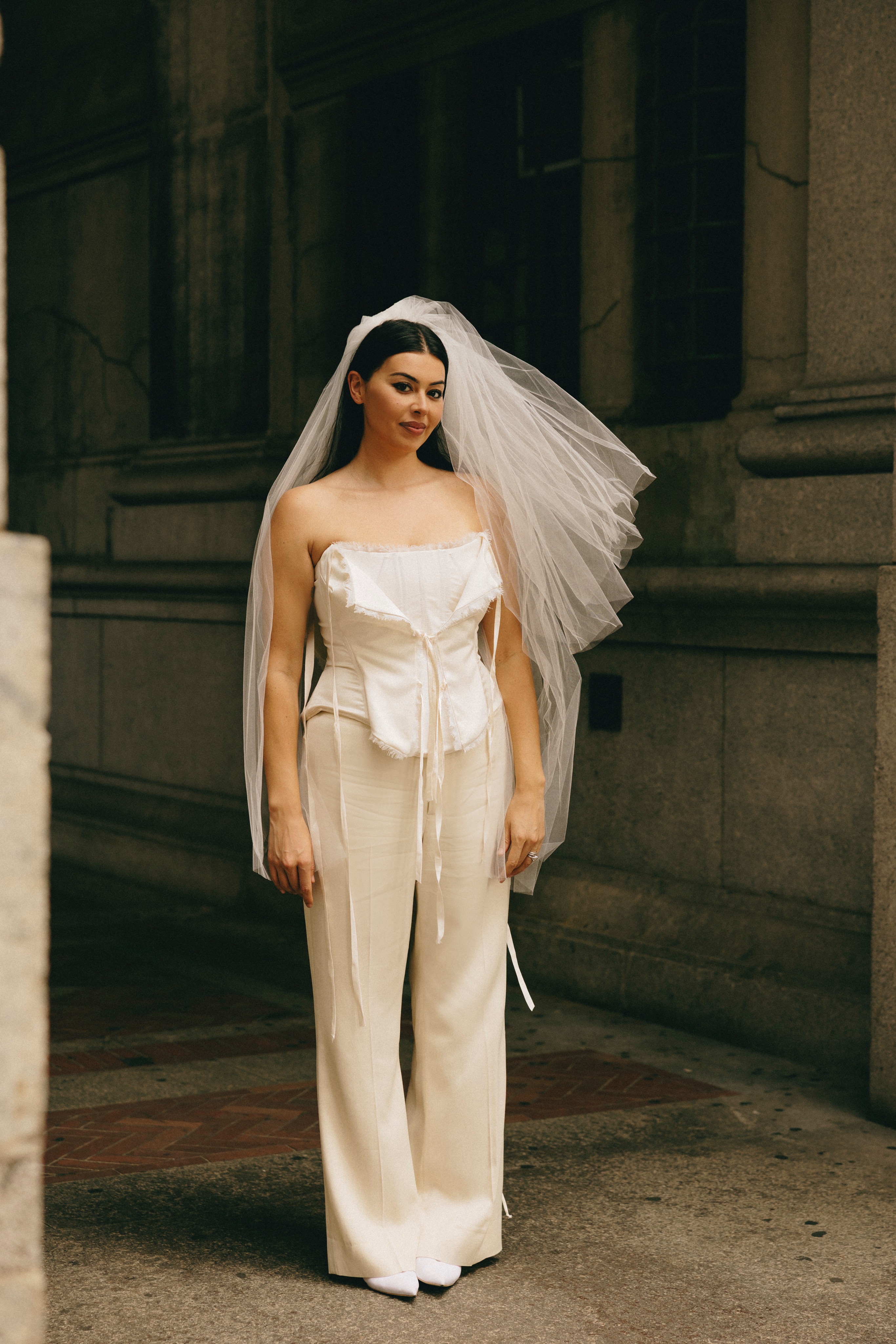
My wife, Hayley Kosan, and I borrowed from the above playbooks for our events. At our city hall ceremony, we wore Don Nicó, an emerging queer designer we came across on Instagram. For the reception, it was custom ready-to-wear brand LaPointe. And for the after-party and bachelorette, pieces we dreamed up with an atelier called EsqueBy.
If that’s not enough information and you’re in the market for similar wedding looks, I kindly suggest looking into designers like Tanner Fletcher, Kallmeyer, Jack Sivan, and Suited Atelier. I also highly recommend treating your accessories as intently as you do your garments—bonus points if they’re from queer-led brands. A white leather headscarf and gloves from Clyde? I do! A campy oversize boa by Milk the drag queen? Showstopping. Rainbow pearl necklaces from Presley Oldham? Gay (complimentary).

Whatever you do, do not let a lack of representation take the wind out of your white chiffon sails. And know that you are uplifting community when you express and celebrate yourself. Take it from Allie, who, after hearing about my Instagram glitch told me that “someone came up to Becca and said, ‘I got my inspiration for my wedding look from you.’” Hess has her fingers crossed for the same takeaway: “I hope my photos can be that for someone.”
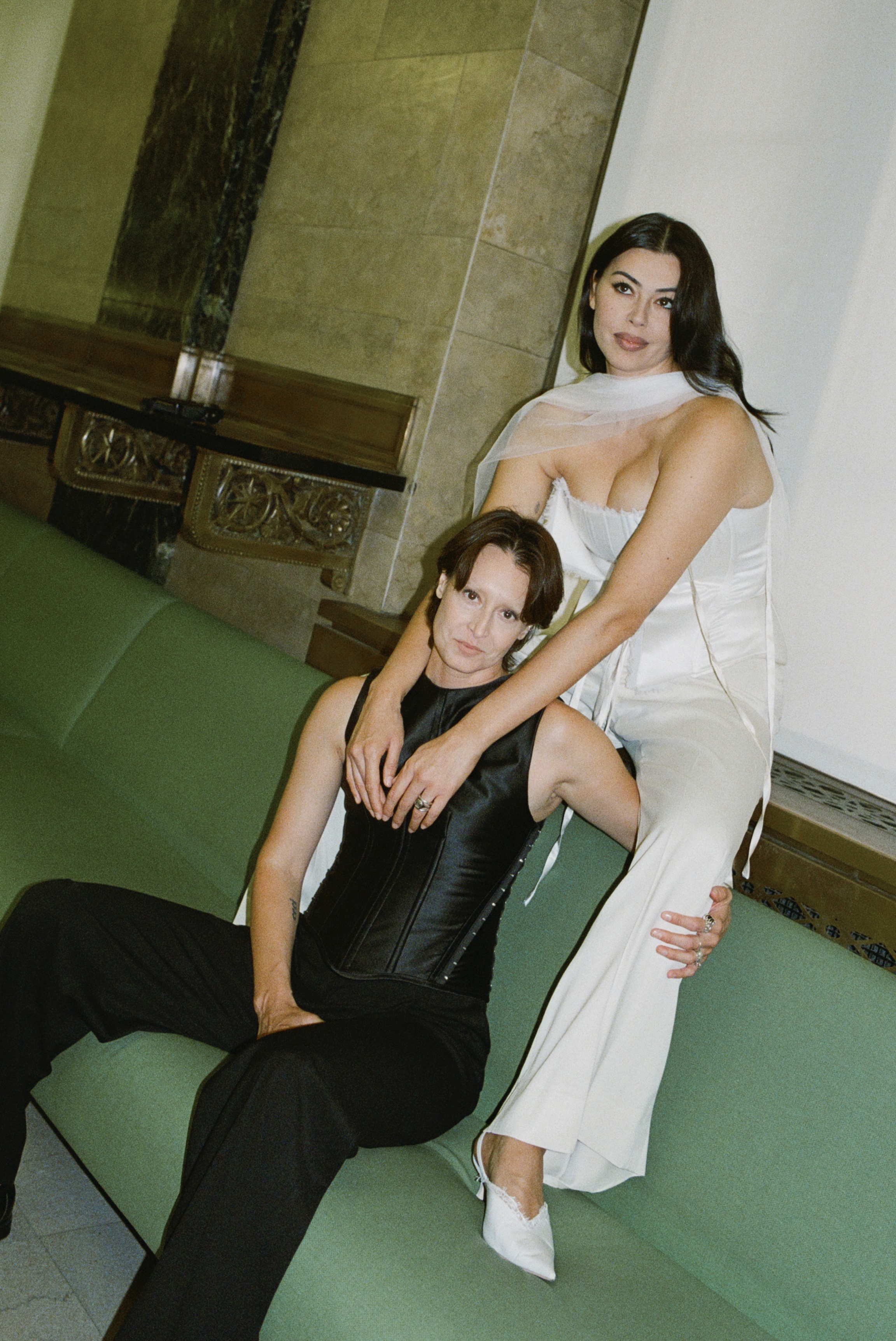
Finally, Denton-Hurst added a bit of inspiration for fellow queer brides: “You get to make up all the rules, similarly to the way you’ve made up all the rules in your relationship outside of a traditional structure. Keep going.”
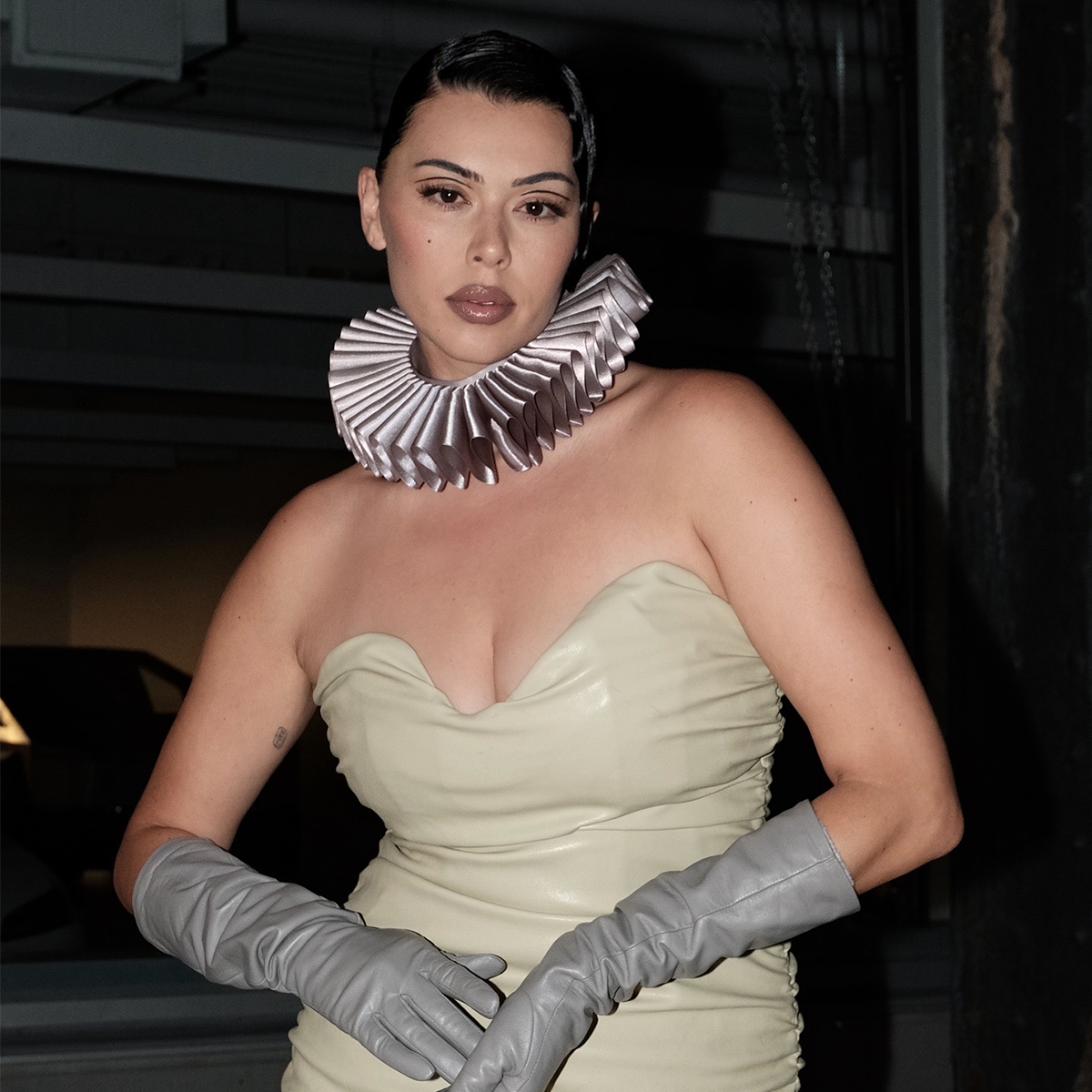
Lauren Chan (she/her) is a Canadian model, editor, and entrepreneur known for her work to make the fashion industry more inclusive regarding size diversity, 2SLGBTQ+ voices, and AAPI representation. Chan was formerly a fashion editor at Glamour where she was considered integral to the rise of body diversity in media and awarded with the American Society of Magazine Editors Next Award. She is the founder of Henning, a luxury, plus-size clothing label that was acquired by Universal Standard in 2023. Chan made history as Sports Illustrated Swimsuit's first lesbian cover model and has since become a TV personality, appearing on Canada's Drag Race and Good Morning America, among others.